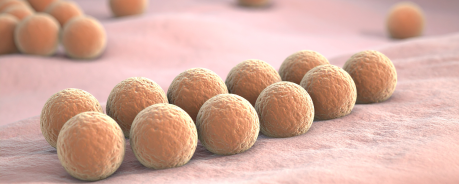Candidiasis

Candidiasis is a fungal disease caused mainly by the widespread yeast fungus Candida albicans. It is also called Candida mycosis or thrush. Fungi like Candida albicans are found on the skin and mucous membranes of every person - this is completely normal.
Sometimes, however, they prevail, for example when the body's defences are weakened. Candidiasis is more common in women than in men. The labia and vagina are particularly affected. In men, the fungi mainly affect the glans and the foreskin.
In people with an immunodeficiency, for example due to HIV, the mucous membranes of the mouth, throat and the oesophagus can also be affected. If a fungal disease causes bleeding in the vagina or on the foreskin, the risk of HIV transmission is increased. HIV-negative people with candidiasis have a higher risk of becoming infected with HIV, because a possible inflammation makes it easier for the virus to enter the body.
Course of the disease
The infection causes inflammation of the skin or mucous membrane. The mucous membrane turns red and whitish to yellowish patches begin to form. The affected mucous membranes itch strongly. If the labia and the vagina are affected, a whitish discharge also appears.
If the skin is afflicted, for example under the breasts or in the armpits, large areas of itchy redness, blisters, and small shreds of skin develop.
Transmission
Usually, the transmission from person to person is irrelevant, because the fungus already lives on the human skin anyway. However, if the disease is very severe, the fungus can also be passed on during sex and can also cause the partner to become ill. This mostly happens during unprotected sexual intercourse between men and women.
People with HIV and diabetes, cancer patients undergoing radiation or chemotherapy and pregnant women are particularly vulnerable. People who have undergone antibiotics and cortisone therapy can also be at risk, because these drugs kill certain bacteria on mucous membranes that normally act against fungi.
Protection
Condoms reduce the risk of sexual transmission.
Diagnosis
A smear is taken, which is then examined under a microscope.
Therapy
There are drugs against fungi which are usually applied to the affected skin and mucous membrane areas in the form of creams, gels, or suppositories. In case of a fungal infection inside the body - for example in the gullet - it is also possible to take pills or administer the medication by infusion.
If your penis, labia or vagina is affected, you should refrain from having sex until the fungal infection is cured. To avoid a ping-pong effect, your partners should also be examined and treated, if necessary.
- Imprimer
Share on
